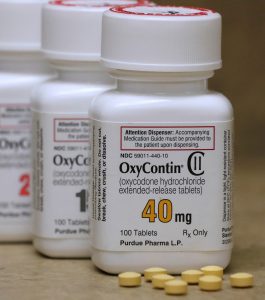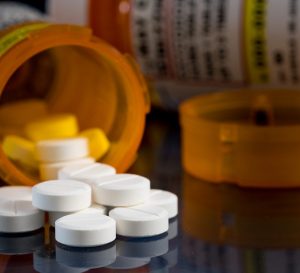Oxycodone addiction has been a growing cause for concern in the United States, considering how findings have shown that there are more than 13 million people in the country who have abused the drug. While it is known to be an effective remedy for chronic pain, a lot of people have also taken advantage of its euphoric effects to experience high.
On top of hydrocodone, oxycodone abuse has been the cause of multiple opioid-related hospital admissions in the US. Despite the figures screaming the serious health risks that the substance poses, specifically drug overdose, oxycodone abuse remains widespread. This must be put to a stop by deciding to take a step in an addiction treatment plan.
How Important is an Oxycodone Addiction Treatment
 Addiction treatment for oxycodone may run for at least 28 days, however; most addiction specialists insist that care which lasts for 90 days is highly effective. The risk of experiencing relapse is very common with oxycodone abuse and by optimizing a treatment plan, this can be prevented, making recovery more imminent.
Addiction treatment for oxycodone may run for at least 28 days, however; most addiction specialists insist that care which lasts for 90 days is highly effective. The risk of experiencing relapse is very common with oxycodone abuse and by optimizing a treatment plan, this can be prevented, making recovery more imminent.
It is important to note that progress during addiction treatment completely varies from person to person. The level of substance abuse which includes duration and amount of doses taken are factors that can primarily impact the length of treatment. It is best to keep in touch with an addiction specialist to determine the best treatment plan for one.
The foundation of an effective treatment for substance addiction such as oxycodone is detox and therapy. A medically supervised one is necessary since withdrawal pain can be overwhelming and without proper medical care, it can push one to return to substance use. This is dangerous since the body may suffer from overdose once a withdrawal has begun.
Overdose has been the leading cause of death for oxycodone addiction. Experts explain that the body decreases its tolerance toward the drug once withdrawal begins. It is dangerous to relieve withdrawal pain by taking the usual dose since this can be too much for the body to endure and eventually this can lead to overdose.
Fighting off cravings is also another huge challenge where medically assisted treatment can be of great help. Opioid substitution medication is a great option to avoid the strong occasions of cravings for oxycodone. With the potency of the drug, cravings can be too much to bear which often leads one to return to substance abuse.
What To Expect in an Oxycodone Addiction Treatment
 Overcoming addiction can be a lifelong journey which entails that completing a treatment plan does not guarantee lifetime sobriety. Abuse of oxycodone causes major changes in the usual function of the body which can be strained forever. However, with proper nutrition and a healthy lifestyle, it can be possible to live normally again.
Overcoming addiction can be a lifelong journey which entails that completing a treatment plan does not guarantee lifetime sobriety. Abuse of oxycodone causes major changes in the usual function of the body which can be strained forever. However, with proper nutrition and a healthy lifestyle, it can be possible to live normally again.
Patients are expected to follow three major steps during addiction treatment. The first step is the detoxification process, where the substance is flushed out of the body to stabilize it for further treatment. The second includes therapy, which aims to psychologically process the triggers of addiction and establish ways to overcome them.
The final step is the aftercare treatment, which is a personal commitment to remain sober. This commitment includes adhering to how therapies have been inculcated during treatment, as well as personally deciding to continue engaging in group therapies as a means of support.
The Detoxification Process
Getting rid of oxycodone in the body can be done by tapering off one’s dosage or taking FDA-approved opioids such as methadone and buprenorphine in order to limit the pain of withdrawal which can last up to 10 days. Some symptoms may continue to persist for months, specifically the psychological ones.
You start feeling the withdrawal symptoms 8 to 12 hours after your last intake. When the drug is snorted or chewed, it can come in very quickly. The time frame varies for long-acting formulations. It is on the third day that the withdrawal symptoms reach their peak.
Patients during a medical detox are constantly monitored round the clock for at least a week. This is to ensure the safety of the condition since oxycodone tends to elevate blood pressure and heartbeat. An extremely terrible flu is how most patients describe their withdrawal pain. Once the body is stabilized after detox, further treatment can now begin.
The Therapy
 Therapy is the next block that follows detox. It includes one-on-one counseling or group sessions. Most studies reveal that the longer the treatment, the more effective coping skills toward addiction are established. A period of at least 28 days is the minimum requirement in most addiction centers. Some patients extend up to 60 days while some go up to 90 days.
Therapy is the next block that follows detox. It includes one-on-one counseling or group sessions. Most studies reveal that the longer the treatment, the more effective coping skills toward addiction are established. A period of at least 28 days is the minimum requirement in most addiction centers. Some patients extend up to 60 days while some go up to 90 days.
The cost can become a cause for concern to some individuals who seek addiction treatment as there are insurance companies whose coverage is only limited to 30 days. Because of this, they prefer to not prolong the treatment. The best option is still to adhere to medical advice since unripe progress can turn into a major problem in the long run.
Regardless of the cost, therapy is highly important in addiction treatment. It allows a person to identify the underlying factors which push one to substance addiction. On top of this, it strengthens coping skills by deepening one’s understanding of oneself, the key to overcoming this bad habit.
The Aftercare Treatment
The aftercare treatment can progress up to a lifetime and it is a matter of choice. When a person intends to stay sober, keeping in touch with a support group is a great means to stay on track. Other individuals fall short after the treatment because of the lack of support. Support groups create a venue where one can continuously learn from others’ experiences.
Apart from this, keeping a healthy lifestyle is also a form of aftercare treatment. When a person becomes stressed out, that is when they become vulnerable to triggers of addiction. To prevent this, it is important to stay nourished, hydrated, and of course, keep one’s mental health at ease.



